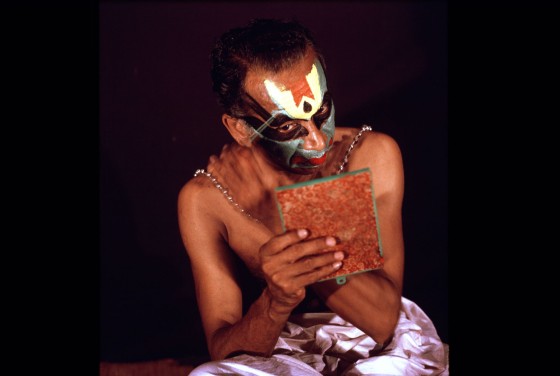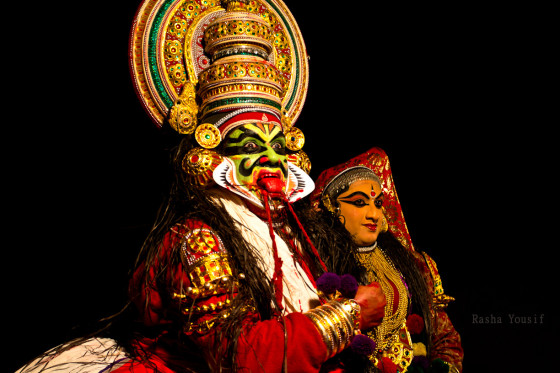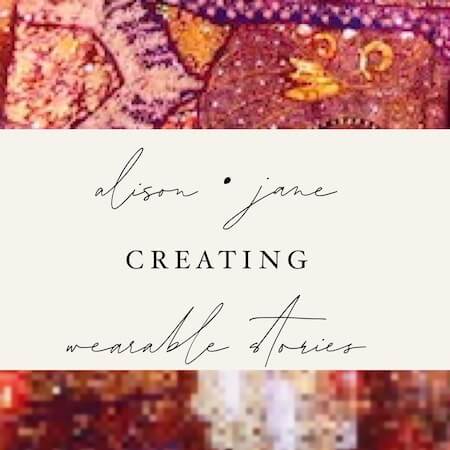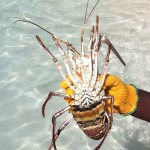The Spell of Kathakali Dance
I have to be honest, the Kathakali dance performance we were scheduled to see in Kerala, seemed like it might be too much of a tourist event for me to enjoy. The elaborate make up procedure beforehand was a feeding frenzy for camera happy travelers like myself, and a bit of a turnoff. Our time in Ft. Cochin was so precious, I wondered why I hadn’t been more vigilant with the research for each and every item we decided to add to the agenda in this charming city. Suddenly, I heard someone motioning me into a small, humid room, off from all the activity. I was transfixed as I watched the precise and skilled hands of one of the dancers turn himself into an otherworldly creature. My thought process began to quickly change. That moment is where my disappointment ended, and I was taken under the mesmerizing spell of Kathakali dance.

My traveling partner had studied dance in southern India while abroad in college. I had always been jealous of her ability to move her head in the bobbly, sing/song way of Indians when they speak. It made me smile every time I saw it. Snake-like, graceful hand movements were something I knew would never be in the repertoire of my body language. The excitement she exhibited before the performance of this elaborate dance was contagious, and we were both soon vying for upclose seats.
Kathakali merged the dance styles of two political rivals and originated in the 17th century. It is believed to be based on the life of Lord Krishna with mythical characters representing heaven and hell. Traditionally it is performed by men. who also take on the roles oaf women. From an original group of more than 100 stories that were choreographed to last for hours, today less than a third are staged in a more concise melodramatic event. The classical Indian dance drama is known for the elaborate makeup of the performers which can take hours to apply and ends with characters taking on a superhuman effect.
Traditionally, all the colors used in the make-up are obtained from natural substances and locally available herbs mixed with a base of coconut oil. For example, the red and yellow colours are made by powdering stones like Chaayilyam and Manayola respectively. White, sued for accents and outlining is a combination of rice flour and lime. The green color is produced by mixing Manayola and Neelam (blue). Another stone, Chenchilyam is powdered and applied in order to protect the skin from burns. Kajal or kohl (the black substance) is prepared by burning gingerly oil and a new cloth. The ashes are made into the makeup. If you’ve ever used saffron in cooking, you know how effective this herb, used for orange, can be at staining. Modern times are seeing the use of paper pulp replacing some of the traditional colors. However natural they might be, the dancers red eyes tell a different story.
Moving on to the costumes: pleated silks, with colorful edges of embroidery on hoop skirts reminding you of Marie Antoinnet and her colorful courtesans. Pom poms and shawls stitched with gold and jewelry accented with bells. Exotic immediately comes to mind. Headresses are intricate, royal and otherworldly; bejeweled and bedazzled gold towers that the audience expects to come crashing to the ground at any moment. The percussion-like foot stomping of the dancers is accented by the sound of bells around ankles. It’s a riot of color and sound, so familiar in the chaos that is India.
As they take to the stage, the over the top theatrics of facial expressions convey messages you did not think possible. Talented performers leave no doubt about the conversation, even though no words are spoken. I didn’t understand the complete translation of the choreography, but the overall theme was quite apparent., Dancers are able to isolate parts of their face, their eyebrows, their cheeks in ways that coincide with their superhuman characters. When combined with specific body moves, they all indicate a separate meaning. The spell of the Kathakali is quite mesmerizing, leading the audience on a cultural journey preserving the past in a phenomenal way. The music is rhythmic, the monkey chieftains loud and grotesque, and the 120 minutes of performance were over so quickly I was left wanting for more.
Photo credit: All photos via Wikipedia Creative Commons except Makeup Table











































Was it similar to the Whirling Dervishes in Istanbul in 2005?
Wow, what a marvelous experience this must have been! And how wonderful for you to be beckoned into a more private encounter with the preparations.
I saw a wonderful Kathakali performance in Cochin some ten years ago. The preparation part of the performance was indeed just as interesting and photogenic as the dance itself. I didn’t know all the back ground info you shared though so thank you for that.
My pleasure as always Kat.
Amazing, I got see the behind the scenes preparation for a Bali dance and the ritual and significance made the performance that much more special. Great post
I bet that was interesting also Paula. The elaborate makeup ritual of the Kathakali was above and beyond any performance I have seen to date.
I too saw a performance of the Kathakali dancers about ten years ago and remember being mesmerised by their makeup, movements and facial expressions. To be able to tell a story this way is quite an art.
I agree jenny. It must take years to perfect the movement of so many facial muscles-quite an art.
This looks incredible – mesmerising as you say. I am glad you gave it a chance and got beyond the normal tourist bits! Well worth it!
It taught me a good lesson Anna-to always look for those opportunities. As you say, it can make all the difference with an experience.
Great post! Such a different culture than we have experienced. Sure hope that we get to visit India soon.
The music and makeup is amazing. What an experience!
Hi Alison,
Your close-up photographs are stunning and are a beautiful accompaniment to this story. Enchanting!
Josie
The makeup and costumes are beyond belief. I would like to witness the Kathakali dancers someday myself!
What extraordinary costuming and makeup! I would love experience the Kathakali dance performance. I have yet to visit India – would love to spend several months there.
If I ever make it to India, you have shown me that this is something to witness; however, I understand your sense that observing the process as a tourist perhaps detracts from its authenticity. However, we seldom have a choice.
This was definitely something that stuck out in my mind and is unforgettable…from our trip to Kerala. Love your photos.
Thanks Corinne. It was so different from anything I had seen before, I felt the same way.
Lovely post! I also avoid these touristy trap kinds of things, but on my second visit to Fort Kochi (I’m a real Indiaphile and have been there many times) I went to this performance. I was intrigued by the makeup and costumes, so even if it is rather touristy, I think there are some real cultural insights to be found here.